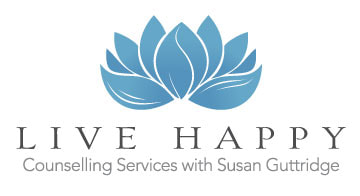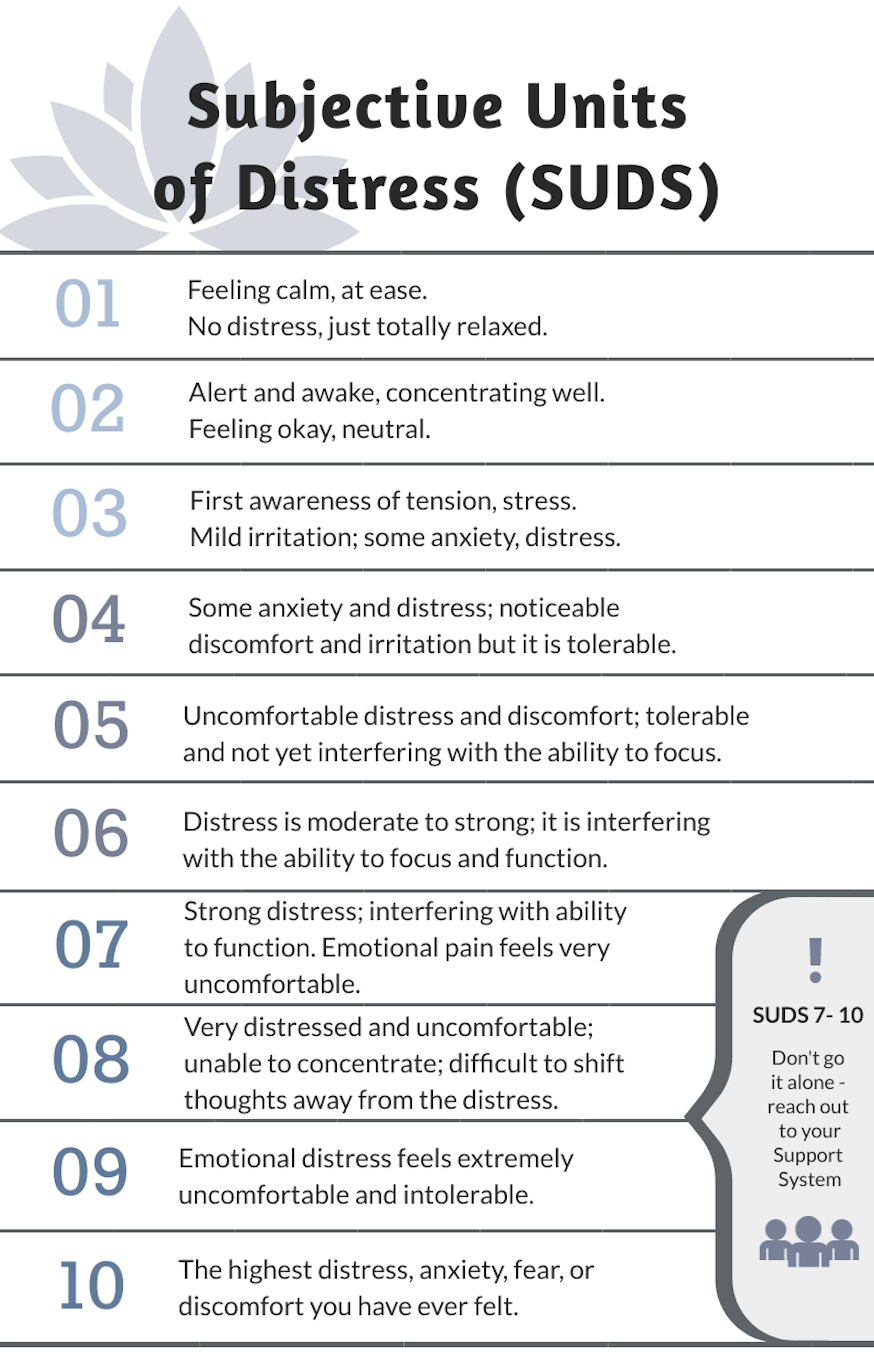It is also incredibly empowering because you will have created that internal sense of calm. One of the goals of learning to regulate emotion is to render all those unhealthy coping strategies unnecessary. Checking In Using the Subjective Units of Distress Scale (SUDS)While this might sound complicated, it’s actually super easy to use and apply. The Subjective Units of Distress Scale (SUDS for short), is a 1 to 10 rating scale. It is used widely in counselling psychology to measure the level of emotional distress a person is experiencing at a given moment. It is ‘subjective’ because you make the rating for yourself. Using the SUDS scale, 0 refers to no distress, and 10 refers to extreme distress. Try checking in to rate your SUDS once or twice throughout each day. It’s useful because often we miss the early signs of emotional activation and it only catches our attention when our present moment coping is completely derailed. If we can intervene at the early stages of activation, and engage in a calming activity, we will experience a lot less distress. Five Simple Steps for Checking-inUse this simple method for checking the SUDS:
The early signals of the body shifting into activation can be subtle at times. Because of this, we can often miss the vital cues our body is giving off that indicate we are escalating into distress. Learning to recognize the earliest sign that we are activating up can help us intervene sooner, and thus reduce that distress before it feels out of control. Developing awareness of distress lessening based on something you are in charge of directing is a remarkable achievement worth noticing! Using the SUDS in Daily LifeWhen we live with chronic anxiety, a certain level of physiological activation comes to be part of daily life. When a troubling situation arises or when we are triggered, we spike up into high activation super fast because we were already in physiological activation. If this sounds like you, getting into the habit of checking your SUDS several times throughout each day is going to be very powerful. You will likely catch yourself with clenched muscles, tight shoulders, and restricted breathing (to name just a few). Each time you check your SUDS and notice your body activated, use a coping strategy to help it settle. Know When to Seek HelpEmotion regulation strategies are useful for reducing distress at a SUDS of 7 and lower. If you rate your SUDS and notice you are feeling at a 7 or higher, please turn to your support system. Who can you call, where can you go, and what can you do? In these moments of distress, often the best and most useful thing we can do is have someone sit with us during the rain while we wait out the storm. Please don’t go this journey alone. Insert Self-Compassion Here…Learning to check in and shift out of emotional flooding is going to require an element of self-compassion. This means giving yourself the same kindness you would give to someone you care about. You need and deserve kindness and patience from you toward you. If numbing or shutting down has been your go-to coping strategy in the past, you may find tuning in to be a little challenging. Please monitor your learning and your journey, and reach out to a counselling professional as needed. Want more strategies like these? Check out my book Calm in the Storm: A Collection of Simple Strategies You Can Use Right Now to Shift Out of Anxiety. Free pdf download of Checking In:
0 Comments
Your comment will be posted after it is approved.
Leave a Reply. |
AuthorSusan Guttridge is a trauma-informed Master level Counsellor with the clinical designation of Canadian Certified Counsellor (CCPA). She has 20+ years experience providing individual and group therapy. Archives
January 2024
Categories
All
|
||||||||


 RSS Feed
RSS Feed